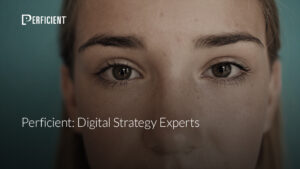This week’s Consumer Goods Business and Technology Conference kicked off with the theme of the connected company. Opening comments came from Kara Romanow, executive editor of Consumer Goods Technology, and Albert Guffanti, group publisher of Consumer Goods Technology and RIS News, Edgell Communications.
A lot of the people here will talk about connections and collaboration, they said. Question: When you hear the term connected company, what do you think? Answer via twitter.com/cgtmagazine.
“As a media brand, CGT lives and dies on how you connect with a community,” Guffanti said. “Like many brands, they are always looking for ways to connect with their customers. This includes two new events on analytics and the consumer goods marketing forum. Also launched the Consumer Goods Video Network with the goal of becoming the ‘Ted Talks’ of consumer goods.”
In the opening keynote, Kevin Hartley, chief innovation officer at Keurig Green Mountain, shared the story of how Keurig came to be and how the brand has continued to grow and innovate.
Keynote Speaker: Kevin Hartley: Brewing Innovation
The Future is Digital
Becoming digital is the surest way for you to understand your customers' needs and meet their expectations. Learn how Perficient can help anticipate what's ahead for you and your customer with a digital strategy centered around empathy, alignment, and agility.
Great Quote: “An idea is potential for power.”
These ideas are infinite. Of course, executed ideas are how organizations monetize the power. If you think of a Venn diagram as the idea and the execution. That overlap represents those who can innovate. How do you make an idea obvious in foresight (rather than hindsight)?
Step 1: define what you are trying to do? “We want to create the ultimate beverage experience” with a mission of having a brewer on every counter and a beverage for every occasion. Their values include play-to-win. Most of us love the idea of “mattering” or doing something greater than ourselves.
Some numbers on Keurig:
- 10+ billion pods last year
- 35,000 employees
- 10 million POS
- this year, will be at a little over $5 billion. (6 years ago Keurig was at $200M)
No Global 1000 company would have launched Keurig. The purchase intents scores were so horrible that no company would have invested. Their first two “single server” machines were returned from Dunkin Donuts with breakdown issues.
The bounder, Bob, sold a company for about $9 million 30 years ago. He retired to a Vermont ski area where there was a coffee shop that was about to be closed down. Their idea was to bring in green coffee beans and roast them in shop. The idea cost $5,000 and Bob offered to buy the roaster and split the profits. in 2006, Green Mountain bought Keurig. If they had brought Keurig down to just use Green Mountain coffee, the company would be around $100M rather than $5B.
Keurig started as someone who wanted to solve the coffee pot problem. At a steak house their salad dressing came in a small plastic cup. That gave them the idea for the single serve coffee pods. They struggled in the beginning with no branded coffee licensees.
Today, they intend to do the same thing in sodas and cold drinks that they do with coffee. On the day of the announcement, Coke bought 16% of Keurig. They call it Keurig Cold. To do this, they did a number of “innovative things” including scrapping the stage gate innovative process.
98% of new offerings fail. The biggest cause of failure was the fact that a consumer didn’t think it was all that exciting. It’s called empathetic imagination for those who listen and make it so. Keurig Cold came because their ethnographic studies had customers asking for Keurig to do the same thing with cold beverages. When they started asking for it, the engineers hated the idea. They figured it would cost $500M to figure out how to do something that might be impossible.
Quote: Do the last experiment first. So in their case they had modeling company make a fake model and then did a test with an assistant under the table pushing up the contents of a can of coke. The users loved it.
The board voted to spend a little money to see if they could crack the two problems:
- How to carbonate water without a CO2 canister
- How to refrigerate water very fast
Quote: “The biggest barrier was internal. We aren’t in the cold beverage business; we are in the coffee business”
Math: The cold beverage business is 6X the size of the hot business.
Be careful what you think. Unless you think you will win, you won’t. The brain starts it all. Something is only factually correct because you think it is. This gets back to the quote above about the biggest barrier.
Last question: If that’s so, on an individual level might it also hold for your team?
One last thought: Always brew early and often.
Follow Perficient’s Consumer blog on Twitter here, and follow Perficient on LinkedIn here.
